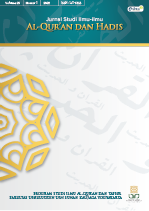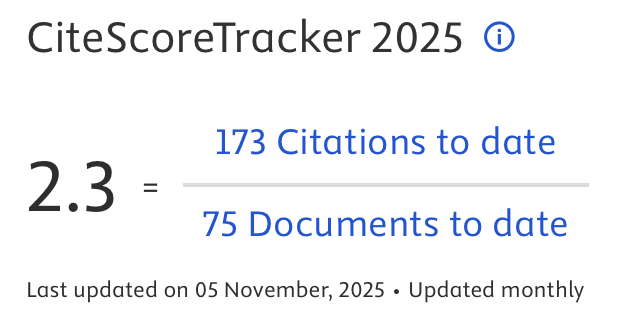Spiritual Message of Al-Qur'an Calligraphy in Raudhatul Mukhlisin Mosque Jember
DOI:
https://doi.org/10.14421/qh.2022.2301-10Keywords:
Calligraphy, Raudhatul Mukhlisin Mosque, Al-Qur'an, WorshipAbstract
The discourse of this research lies in the presence of calligraphy on the walls of the Raudhatul Mukhlisin mosque, Jember Regency with mosque congregations. The discourse of this research lies in the existence of calligraphy on the walls of the Raudhatul Mukhlisin mosque, Jember Regency, with the mosque's congregation. This paper aims to find out the existence of calligraphy in the spirituality of the congregation in the Raudhatul Mukhlisin mosque, Jember Regency. They were assisted by using the type of phenomenological research with data collection techniques with observation, in-depth interviews, and documentation. The results of this study are that the existence of calligraphy, which can be said to be luxurious at the Raudhatul Mukhlisin mosque, not only gives a feeling of amazement, peace when looking at it and a calm heart when worshiping, but there are some jam'ah who feel disturbed when worshiping at the mosque because of its focus. Divided by calligraphy on the mosque walls has an attraction to be seen during worship. In conclusion, the existence of calligraphy on the walls of the Raudhatul Mukhlisin mosque seeks to introduce religion through calligraphy and aesthetics. In conclusion, the existence of calligraphy on the walls of the Raudhatul Mukhlisin mosque seeks to introduce religion through calligraphy and aesthetics.
 Abstract viewed: 524 times
|
Abstract viewed: 524 times
|
 PDF downloaded = 425 times
PDF downloaded = 425 times
References
Abubakar, Humam. “Sekilas Tentang Asal-Usul Huruf Arab Dan Seni Kaligrafi Di Indonesia.” Humaniora, no. 2 (1991). https://doi.org/10.22146/jh.2093.
Agilkaya-Sahin, Zuhal. “A Critical Overview of Turkish Measures of Religiosity.” Journal of Empirical Theology 33, no. 1 (2020).
Akbar, Ali. Kaedah Menulis Dan Karya-Karya Master Kaligrafi Islam. Jakarta: Pustaka Firdaus, 1995.
Al-Jauzi, Ibn. Shahih Al-Bukhari Ma’a Kasyf Al-Musykil, Vol. 3. al-Qahirah: Dar al-Hadist, 2008.
Al-Makassary, Ridwan. “Examining Jakarta Office Mosques: Islamic Teaching Practices and Views of Islamic Ideological Issues.” Indonesian Journal of Islam and Muslim Societies 3, no. 1 (2013): 121–48. https://doi.org/10.18326/ijims.v3i1.121-148.
Amrulloh, Ahmad Yasir. “Manhaj Taqlidy Hamidi Dalam Pengembangan Kaligrafi Al-Qur’an.” Skripsi - IAIN Jember, 2017.
Andiyan, and Irfan Aldyanto. “Kajian Arsitektur Pada Massa Bangunan Masjid Cipaganti.” SANG PENCERAH: Jurnal Ilmiah Yniversitas Muhammadiyah Buton 7, no. 2 (2021): 189–99.
Aufa, Nela Safana, Muhammad Maimun, and Didi Junaedi. “Living Qur’an Dalam Tradisi Selawatan Di Majelis Selawat Ar-Rizqy Cirebon: Pendekatan Fenomenologi.” Diya’ Al-Afkar: Jurnal Studi Al-Qur’an Dan Al-Hadis 8, no. 2 (2020): 265–80.
Baidowi, Ahmad, Ahmad Salehudin, Abdul Mustaqim, Saifuddin Z. Qudsy, and Nurul Hak. “Theology of Health of Quranic Pesantren in the Time of COVID-19.” HTS Teologiese Studies / Theological Studies 77, no. 4 (2021). https://doi.org/10.4102/hts.v77i4.6452.
Fadhliyah, Ziyadatul. “Semiotika Ferdinan De Saussure Sebagai Metode Penafsiran Al-Qur’an: Kajian Teoritis.” Al-Afkar: Journal For Islamic Studies 4, no. 1 (2021): 109–22.
Fitriani, Laily. “Seni Kaligrafi: Peran Dan Kontribusinya Terhadap Perdaban Islam.” El-Harakah: Jurnal Budaya Islam 13, no. 1 (2011).
Ghozali, Imam, and Syaifuddin Zuhri. “Tata Kelola Arsitektur Masjid Sebagai Bagian Manajemen Pariwisata (Studi Kasus Wisata Religi Di Surabaya).” DINAMIKA GOVERNANCE: Jurnal Ilmu Administrasi Negara 10, no. 1 (2020).
Kao, Henry S.R., Min Xu, and Tin Tin Kao. “Calligraphy, Psychology and the Confucian Literati Personality.” Psychology and Developing Societies 33, no. 1 (2021): 54–72. https://doi.org/10.1177/0971333621990449.
Latifah, Evi. “Respon DKM Ajddi Dan Jama’ah Terhadap Kaligrafi (Studi Kasus Masjid Jami’ Al-Islah Dan Masjid Jami’ Riyadul Jannah).” Skripsi - UIN Syarif Hidayatullah, 2019.
Marsetyo, Subana, and M Sudrajat. Statistik Pendidikan. Bandung: Pustaka Setia, 2000.
Moleong, Lexy J. Metode Penelitian Kualitatif. Bandung: Remaja Rosdakarya, 2017.
Mufti, Wildan Zulza. “Al-Qur’an Sebagai Hiasan.” Skripsi - IAIN Jember, 2017.
Mustaqim, Abdul. Metode Penelitian Al-Qur’an Dan Tafsir. Yogyakarta: CV. Idea Sejahtera, 2015.
Nur, Dalinur M. “Kegunaan Pendekatan Fenomenologi Dalam Kajian Agama.” Wardah 16, no. 2 (2015): 125–41. https://doi.org/10.19109/wardah.v16i2.366.
Prasojo, Zaenuddin Hudi, and Mustaqim Pabbajah. “Akomodasi Kultural Dalam Resolusi Konflik Bernuansa Agama Di Indonesia.” Aqlam: Journal of Islam and Plurality 5, no. 1 (2020). https://doi.org/10.30984/ajip.v5i1.1131.
R, Ilham Khoiri. Al-Qur’an Dan Kaligrafi Arab. Jakarta: Logos Wacana Ilmu, 1999.
Rahmatullah. “Aspek Magic Surat Al-Ikhlāṣ Dalam Kitab Khazīnat Al-Asrār.” Quhas: Journal Of Qur’Ᾱn And HadῙth Studies 7, no. 1 (2018): 42–60.
Rifai, Muhammd. KH. Wahab Hasbullah: Biografi Singkat 1888-1971. Yogyakarta: Grahata: House Of Book, 2014.
Rochym, Abdul. Masjid Dalam Karya Arsitektur Nasional Indonesia. Bandung: Angkasa, 1983.
Ropi, Ismat. “Vali Songo Festival: Tracking Islamic Heritage and Building Islamic Brotherhood.” Studia Islamika: INDONESIA Journal For Islamic Studies 6, no. 3 (1999).
Setiadi, Yudi. “Kaligrafi Al-Qur’an Sebagai Ornamen Majid (Studi Living Qur’an Di Masjid Nurul Imam).” Hermeneutika: Jurnal Ilmu Al Qur’an Dan Tafsir 13, no. 22 (2019).
Shofa, Mu’arifatush, and Agus Iswanto. “The Quran As A Protector Of Self And Practice In Community.” Kontemplasi: Jurnal Ilmu-Ilmu Ushuluddin 08, no. 2 (2020).
Sirojuddin, A R. “Peta Perkembangan Kaligrafi Islam Di Indonesia.” Al-Turas 20, no. 1 (2014): 219–32.
Sterkens, Carl, Rafael Isharianto, and Paul Vermeer. “Religion and Inclusive Society: Attitudes towards the Poor among Muslim and Christian Students in Surabaya.” Journal of Empirical Theology 32, no. 1 (2019).
Sugiyono. Metode Penelitian Kuantitatif, Kualitatif Dan R&D. Bandung: Alfabeta, 2016.
Suma, Muhammad Amin. Ulumul Qur’an. Jakarta: PT Raja Grafindo, 2014.
Wardani, Laksmi Kusuma, and Arinta Prilla Gustinantari. “Penerapan Elemen Hias Pada Interior Masjid Al Akbar Surabaya.” Dimensi Interior 6, no. 2 (2008): 99–110.
Wargadinata, Wildana, and Laily Fitriani. Sastra Arab: Masa Jahiliyah Dan Islam. Edited by Abdul Hamid. Malang: UIN-Maliki Press, 2018.
Yahya, Amri. “Pengembangan Kaligrafi Untuk Optimalisasi Peranan Bahasa, Sastra, Dan Budaya Arab.” Humaniora 13, no. 2 (2001).
Downloads
Published
How to Cite
Issue
Section
License
Publishing your paper with Jurnal Studi Ilmu-ilmu al-Qur'an dan Hadis means that the author or authors retain the copyright in the paper. Jurnal Studi Ilmu-ilmu al-Qur'an dan Hadis uses license CC-BY-NC-ND or an equivalent license as the optimal license for the publication, distribution, use, and reuse of scholarly works. This license permits anyone to copy and redistribute the material in any medium or format and must give appropriate credit, provide a link to the license, and indicate if changes were made. If you remix, translate, transform or build upon the material you may use it for private use only and not for distribution. Jurnal Studi Ilmu-ilmu al-Qur'an dan Hadis granted an exclusive non-commercial reuse license by the author(s), but the author(s) are able to put the paper onto a website, distribute it to colleagues, give it to students, use it in your thesis, etc, so long as the use is not directed at a commercial advantage or toward private monetary gain. The author(s) can reuse the figures and tables and other information contained in their paper published by Jurnal Studi Ilmu-ilmu al-Qur'an dan Hadis in future papers or work without having to ask anyone for permission, provided that the figures, tables, or other information that is included in the new paper or work properly references the published paper as the source of the figures, tables or other information, and the new paper or work is not direct at a private monetary gain or commercial advantage.
Jurnal Studi Ilmu-ilmu al-Qur'an dan Hadis journal Open Acces articles are distrubuted under the Creative Commons Attribution-NonCommercial-NoDerivatives 4.0 International (CC BY-NC-ND 4.0). Article can be read, copy and redistribute the material ini any medium or format under the following conditions:
Attribution — You must give appropriate credit, provide a link to the license, and indicate if changes were made. You may do so in any reasonable manner, but not in any way that suggests the licensor endorses you or your use.
NonCommercial — You may not use the material for commercial purposes.
NoDerivatives — If you remix, transform, or build upon the material, you may not distribute the modified material.










